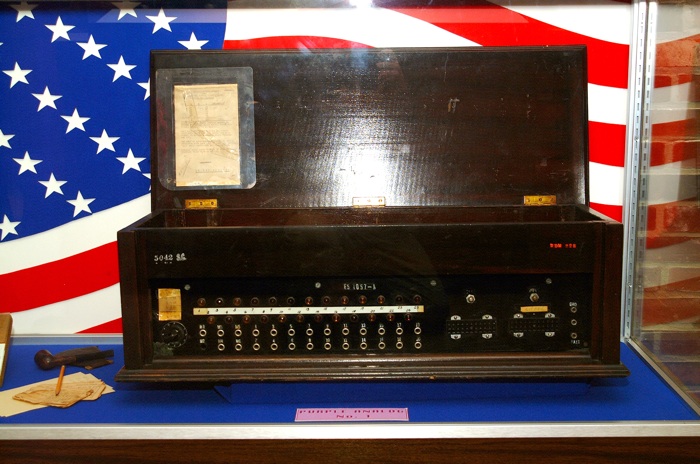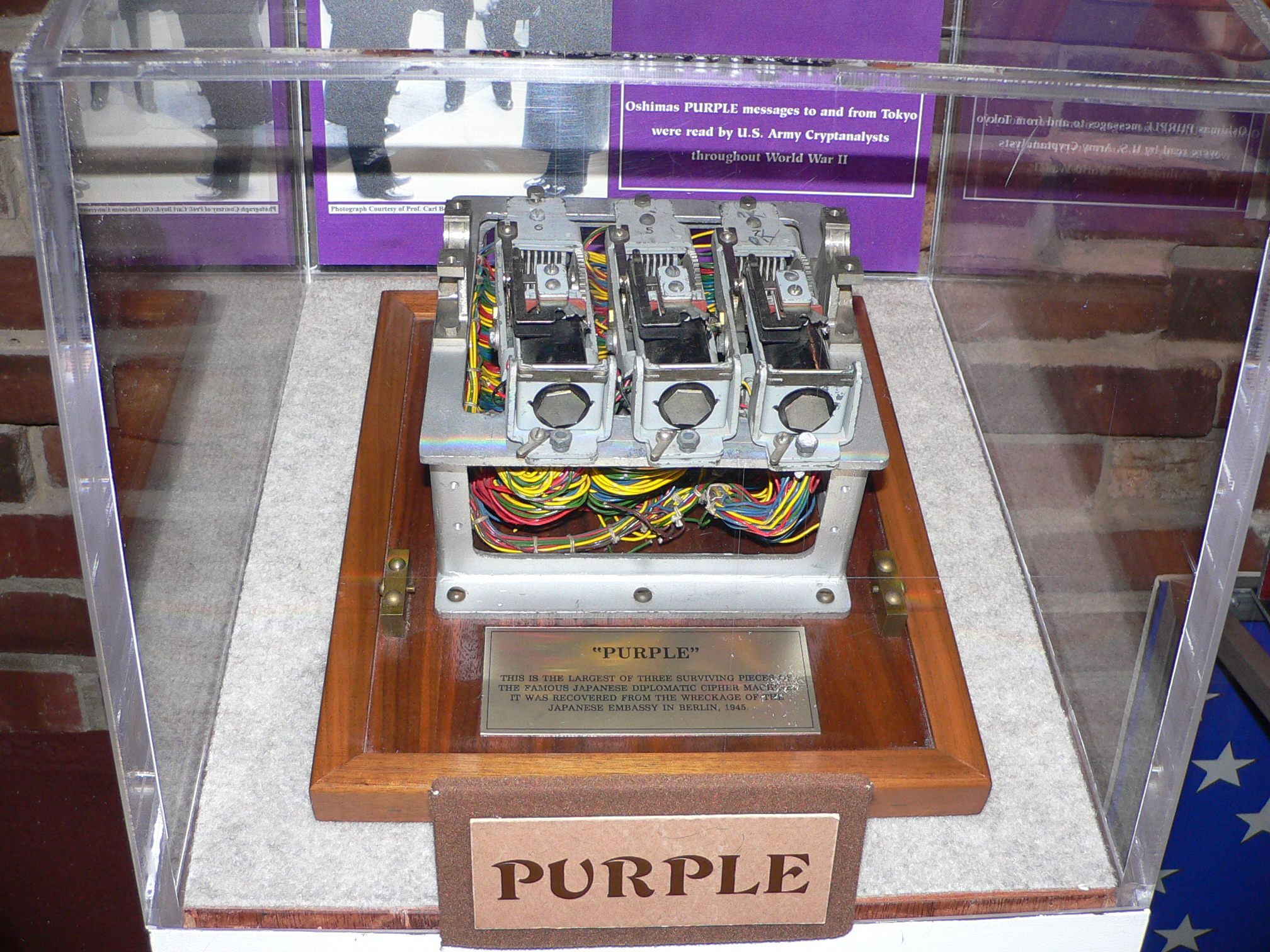The following video filmed by BBC, (entitled "Code-Breakers: Bletchley Park's Lost Heroes), discusses the impact that Cryptology had on the European battlefront of WWII. Essentially, the Germans created a machine, known as the Enigma machine, which produced a very complex cipher. The British were able to crack the cipher the machine created and this led to many victories for the Allies.
While British codebreakers were breaking the German Enigma cipher and altering the course of the war in Europe, American codebreakers were having an equally important influence on events in the Pacific arena. The Japanese received an Enigma machine from the Germans. They improved upon the Enigma machine and eventually created a machine that the Americans codenamed Purple. The Purple Machine was made up of two typewriters as well as an electrical rotor system with a 25 character alphabetic switchboard. Like the Enigma Machine, the first typewriter was the method in which the plaintext, or unencrypted message, could be manually inputted. The typewriter was built to be compatible with English, romaji, and roman. This added to the security of Purple because the Japanese could change the language they were encrypting. Also, unlike the Enigma Machine, which presented the text in the form of blinking lights, Purple used a second electric typewriter, which would type the cipher text, or encrypted message, onto a piece of paper.
Americans were never able to get their hands on a Purple machine. However, a few years into the war, with the help of William Friedman and Lt. Francis A. Raven, a substantial amount of the cipher was broken. 8 functional replicas of Purple were created (Balciunas).
Purple Machine
Inside a Purple Machine

In June 1942 the Americans deciphered a message that the Japanese encrypted using Purple. The message outlined a Japanese plan to draw U.S. naval forces to the Aleutian Islands by faking an attack. This would allow the Japanese navy to take their real objective, Midway Island. Although American ships played along with the plan by leaving Midway, they never strayed far away. When American cryptanalysts intercepted and deciphered the Japanese order to attack Midway, the ships were able to return swiftly and defend the island in one of the most important battles of the entire Pacific war. According to Admiral Chester Nimitz, "the American victory at Midway was essentially a victory of intelligence. In attempting surprise, the Japanese were themselves surprised" (Singh 1999, p. 191).
Because the Allies were aware of "surprise" attacks from Axis powers, the Allies had a huge advantage. This advantage was a huge tipping point in winning WWII.